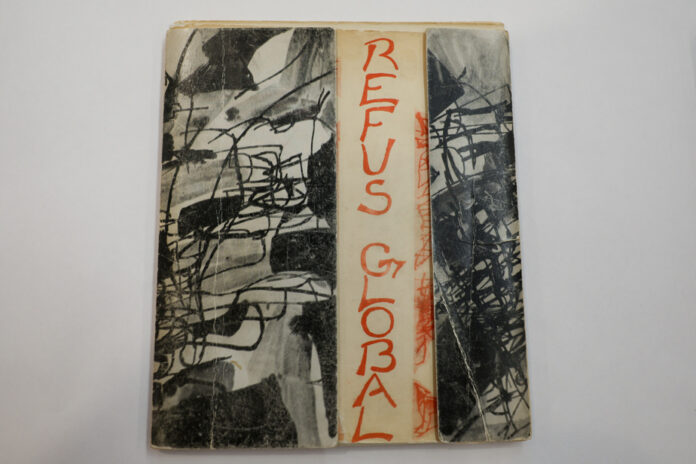The launch of the collective manifesto Refus global as well as its main author, Paul-Émile Borduas, and two of its 15 co-signatories, Jean Paul Riopelle and Marcelle Ferron, are now designated respectively as historical events and figures in Quebec.
The Minister of Culture and Communications, Mathieu Lacombe, announced these designations on Wednesday on the occasion of the 75th anniversary of the book, published on August 9, 1948 at the Tranquille bookstore in Montreal.
The launch of the Refus global as well as the artists Paul-Émile Borduas, Marcelle Ferron and Jean Paul Riopelle are therefore registered in the Quebec Cultural Heritage Register under the Cultural Heritage Act.
Minister Lacombe underlined the importance of the publication of this manifesto, considered “as a pivotal moment in the cultural history of Quebec”.
“It challenges the social, intellectual and artistic orthodoxy of the time and calls for a more free and globally minded society,” he said in a statement.
The document consists of a work of nine texts. The main essay written by Paul-Émile Borduas, painter and teacher at the École du Meubles, gives the collective its title. The text bears the signature of 15 other people, all members of a group of young Quebec artists, the Automatists, led by Borduas.
These signatories “claim greater freedom in the act of creation, but also in the way of existing”, can be read in the Register of Cultural Heritage.
“The manifesto virulently criticizes the dominant society and its conservatism, as well as the control exerted on the minds by the religious and political powers”, adds one.
Following the controversy generated by the publication of the book, Paul-Émile Borduas lost his teaching position and left Quebec. He died in Paris in February 1960 and his ashes were transferred to the Mont-Saint-Hilaire cemetery in 1989.
“Paul-Émile Borduas is a pioneer of abstract painting in Quebec and Canada. The influence of his ideas and his quest for freedom as expressed in his writings, especially the manifesto, is arguably as important as his recognition as a painter,” said Mr. Lacombe.
The Minister also describes Jean Paul Riopelle and Marcelle Ferron as “crucial actors in our cultural and artistic history”.
Riopelle is notably recognized for having redefined the boundaries between abstraction and figuration. The prolific artist produced several thousand works, including in his studio in L’Isle-aux-Grues where he died in March 2002. The one who, among other things, created hundreds of drawings, engravings and sculptures , also spent part of his life in France before returning to Quebec for good in 1990.
Several events in Canada and France are celebrating the artist’s 100th birthday this year.
The first female visual artist to be designated as a historical figure in Quebec, Ferron is one of the pioneers in the field of the arts in the province.
“She is notably one of the first female visual artists from Quebec to dedicate herself completely to her art and one of the few of her generation whose work shines, during her lifetime, both at home and internationally”, is- it writes in the Register of Cultural Heritage.
Marcelle Ferron first devoted herself to painting before specializing in glass work. The artist has produced several windows integrated into the architecture of public buildings. One well known is that of the Champ-de-Mars metro station in Montreal called Verre-screen.
Marcelle Ferron died in November 2001 in Montreal.





